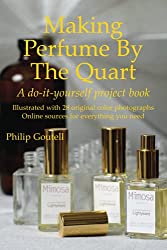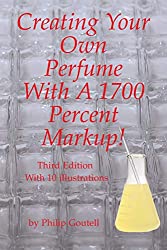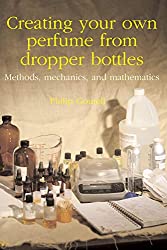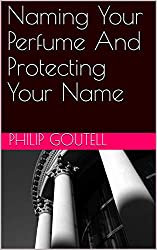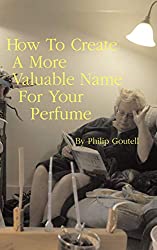Testing — from the past
In the original edition of Creating Your Own Perfume With A 1700 Percent Markup! I explained how we tested the market before going to the expense of producing our own fragrance. Our media at the time was a print catalog mailed to a substantial number of customers who gave us regular orders.
Times have changed. That print catalog is long since obsolete and the simple testing method we used them would have to be rethought and restructured today. Still, the testing method we used worked. For a few hundred dollars we gained the assurance that we could sell a fragrance to the people who were already buying other products from us. Testing helps you avoid expensive failures and uncovers healthy opportunities.
What follows is a short report of how we tested our market for evidence that we could sell them fragrance.
I sold my first fragrance through a print catalog. It was a fragrance we had produced ourselves. Production expense would be about $2,000 but before making a commitment to producing this fragrance, I wanted to test the market, to see if we could sell a fragrance, any fragrance at all.
We had the ability to create and run an ad for the test but we would need a fragrance. Or would we? We could have run a dry test, advertising a fragrance that we didn't have on hand and which might never exist. We could then count the paid orders and refund the payments with the explanation "due to unprecedented demand, we are out of stock..."
Dry testing is risky business and maybe illegal and we didn't do it. The appeal of dry testing is that it is inexpensive and can give you solid sales data, not just promises from market research that asks people "Would you buy...?" We wanted to find out if people—enough people—would send us money. To run a live test we needed a product. We considered these possibilities:
(1) Private Label
"Private label" involves going to a source that offers a ready made product that can be imprinted with your brand or company name. For cosmetics, private label is a big business but it is difficult to find a private label source for perfume.
(2) Buying the same product a competitor is selling, if a distributor can be found that will sell it to you
If the item you want is being sold and it wasn't developed exclusively for the company you see selling it, often you can buy one, look at the packaging and track down the manufacturer who will point you to a distributor who will sell you a small quantity.
(3) Buy retail from a competitor if a distributor can't be found who will sell it to you
If lack of a product was holding up a test, I wouldn't hesitate to pay the full retail price in order to obtain a few dozen bottles for a test. But before doing this I'd want to make sure that the competitor didn't own exclusive rights to the product and I'd be in trouble for advertising it. To be on the safe side, I might put my label over theirs.
(4) Buy just about any inexpensive fragrance you can find and stick your own label on it
Remember, this is a test to see if your market will buy perfume from you. You wouldn't use the "real" name of your fragrance for a test like this and, if the fragrance is a bit stinky, you might not emphasis your company name. But this will give you a product to test, to see if you can sell a fragrance.
(5) Buy just about any inexpensive fragrance you can find and ship it as is
Sometimes you can buy a closeout where the price is great but there's no continuity. You can end up with more than you need but the price is so low that it doesn't matter. And, if you run short, it's the old "out of stock" message.
In our case
In the case of our first successful fragrance, we had been watching another company that sold a fragrance in a market similar to ours. We bought a bottle from them and found the distributor's name (not the marketer's name!) on the bottle so we simply contacted the distributor and purchased a few dozen bottles at wholesale for our test.
We paid about $7.50 per bottle and, as the other company was selling it for $14.95, we copied their price. Sales were made at a small profit.
Now now we had an answer to our most important question. Yes, we could sell a fragrance to our market. The question now was how profitable we could make it.
Right away we wanted to lose the $7.95 wholesale cost per bottle. We had experience in working directly with manufacturers—the source—so we rounded up the necessary components and found we could get our cost down to less than $1.50 a bottle. Then we made a bet that we could get a nicer fragrance, a more quality scent, than the one we had used for our test. Ultimately this bet paid off in repeat sales.
Finally we bet we could sell our greatly improved product for a higher price and, from $14.95, we moved the needle beyond the $25 mark without suffering a loss of sales.
In short, before investing our $2,000, we tested with a few hundred dollars. Had our test been a failure, the loss would have been small. But the data to be gained—either way, win or lose—would have been well worth the cost of the test.
Homemade perfumes generally lack commercial value, regardless of how wonderful they may be, because their creators fail to record how their perfumes were made. To profit from a perfume, to sell it, to sell the rights to it, or have somebody sell it for you, you must be able to make more of it. To make more you need the formula, the record of how the perfume was made: what materials were used and how much of each material was used. While the formula is nothing more than a recipe, a simple piece of paper, it is the key to unlocking your perfume's commercial potential. With the formula in your hand you have the ability to make a few dozen bottles more or, like the celebrities, tens of thousands of bottles. How to create an international production formula for your homemade perfume is a guide to getting you started on the right foot, correctly documenting everything you do as you are doing it, and then using these notes with some basic mathematics to write a simple, accurate, universal formula for your perfume. Writing formulas for your perfumes can change the way you think about them. With your formulas in hand your creations are no longer "here today, gone tomorrow." Now, thanks to your library of formulas, your perfumes become immortal!
While much is written about perfume – the beautiful fragrances... the beautiful bottles – little is available on the "mechanics" of perfume production – the steps that take place on the "factory floor" where a beautiful vision is turned into a finished product, a "ready to sell" perfume. Now you can experience all of these steps, hands on, by making just one quart of your own perfume. If you follow each chapter and do what you are instructed to do, you will end up with from 8 to 64 bottles of your own perfume, depending on the capacity of the bottles you select. Along this "insiders journey," each step is profusely illustrated with professional color photographs and you'll learn — • Exactly what alcohol you'll need and where to get it • Why you'll want (just a little!) water in your perfume • What type bottles you'll need and why you cannot use others • Why you will use a spray and not a cap • How to fill and seal your bottles • How to label your bottles with the correct information so they will be legal for sale • How to select a name for your perfume that will allow you to acquire powerful trademark rights free. If you are a developer of scents you are encouraged to use one of your own for this project. If you are not a scent creator yourself you'll learn how to get a fragrance oil that is exactly right for this project. Online sources are given for all required supplies and materials. Nothing can hold you back from starting your project immediately!
Perfume is famous for the markup it can achieve, even for a middle market fragrance. While "everybody knows" that perfume costs next to nothing to make (not completely true) the making of it is often considered an esoteric secret. "Creating Your Own Perfume With A 1700 Percent Markup!" details how a 3-person company with no experience created their own fragrance in response to a marketing opportunity that was too good to pass up. The book explains exactly what was done to create a fragrance for that opportunity but it is far more than a history of the author's project. "Creating Your Own Perfume With A 1700 Percent Markup!" lays out every step in the process of creating your own perfume, either as a do-it-yourself project – and without the benefit of automated equipment some compromises and workarounds are required – or full bore professional production under your supervision. Either way you will be producing a quality fragrance at a remarkably low cost. Do you have a marketing opportunity that would be wildly profitable if only you could obtain your fragrance at a ridiculously low cost? "Creating Your Own Perfume With A 1700 Percent Markup!" is the guide you need to do it.
Now when you make your own perfume you can make it fully "commercial" meaning you will be creating a product ready for regular, continuous sales to friends, relatives, and the public! If the fragrance you've made has already won praise, why not share it with others? Some might pay you for it and want it for their web stores or retail boutiques! Creating your own perfume from dropper bottles: Methods, mechanics, and mathematics guides you through steps that can turn your hobby project into a perfume business. Discover how close you are now and how little more you must do to take what you made with essential oils and dropper bottles into a business of your own! For an introduction to this book, watch this video.
You can build a perfume business of your own using this business plan as a guide. By following its detailed strategy you learn to identify motivated groups of potential perfume buyers. Members of these groups are near the tipping point of desire for a new perfume. You don't know these people and they don't know you but you know a marketer they trust, one who does not currently sell perfume and might never think of selling perfume were it not for your approach. Here is where you step in with a professional plan, promotion, and perfume to take advantage of this ripe opportunity for mutual profit. Before your first promotion has peaked, you will already be developing a relationship with your next marketing partner. Following this plan, you will gain more and more profit with each new marketing partnership.
A really great name, a special name that is just right for a particular perfume or perfume marketer (or entrepreneur with money to invest!) can be worth a ton of money. But few individuals with great ideas ever manage to cash in on those brilliant ideas. Instead they wait while others "discover" their idea, acquire legal rights to it and make all the money while they are left out in the cold without a penny having been earned for what was once THEIR idea.
If you are struggling to name your perfume and are looking for a name that will have real value, "Naming Your Perfume And Protecting Your Name" will help you weed out low value names and point you to names that have better marketing value plus the potential to become valuable assets in themselves.
If you have a great name you want to protect but no fragrance, "Naming Your Perfume And Protecting Your Name" will guide you through the simple steps you must take to acquire a legal right to that name before someone else grabs it! Best of all, "Naming Your Perfume And Protecting Your Name" shows you how to gain strong legal protection for your name without a lawyer and without spending more than pocket change.
Never had an idea for a product name? Never thought much about perfume? "Naming Your Perfume And Protecting Your Name" may stimulate your interest in a whole new game that, when played well, can make you lots of money without your having to leave the comfort of your home office.
When you name a perfume you create a valuable asset – the name itself. To sell your perfume you want the most effective name possible. But a good name can have value beyond the edge it gives your sales. In naming your fragrance you are creating a trademark and a trademark can have value independent of the product. The value of that trademark can vary. Much depends on how well, in naming your perfume, you follow the trademark "rules." How To Create A More Valuable Name For Your Perfume first helps you develop a name that will be effective in selling your perfume. It then prods you to make use of certain techniques that can turn a good name into a great trademark, strong and valuable. If you have questions about how to protect a name, How To Create A More Valuable Name For Your Perfume will answer many such as:
- Can you protect your name yourself or do you need a lawyer?
- Can you register a trademark without a lawyer?
- What does it cost to register a trademark?
- How do I enforce the rights I have established?
How To Create A More Valuable Name For Your Perfume covers both state, federal, and international protection.
For article updates, etc., add your name to Phil's mailing list.


Philip Goutell
Lightyears, Inc.


